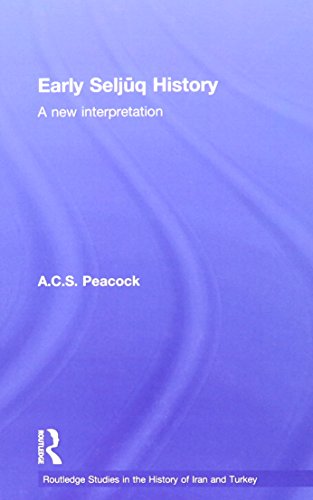

Most ebook files are in PDF format, so you can easily read them using various software such as Foxit Reader or directly on the Google Chrome browser.
Some ebook files are released by publishers in other formats such as .awz, .mobi, .epub, .fb2, etc. You may need to install specific software to read these formats on mobile/PC, such as Calibre.
Please read the tutorial at this link. https://ebooknice.com/page/post?id=faq
We offer FREE conversion to the popular formats you request; however, this may take some time. Therefore, right after payment, please email us, and we will try to provide the service as quickly as possible.
For some exceptional file formats or broken links (if any), please refrain from opening any disputes. Instead, email us first, and we will try to assist within a maximum of 6 hours.
EbookNice Team

Status:
Available4.8
23 reviews
ISBN-10 : 0415548535
ISBN-13 : 9780415548533
Author: A. C. S. Peacock
This book investigates the early history of the Seljuq Turks, founders of one of the most important empires of the mediaeval Islamic world, from their origins in the Eurasian steppe to their conquest of Iran, Iraq and Anatolia. The first work available in a western language on this important episode in Turkish and Islamic history, this book offers a new understanding of the emergence of this major nomadic empire Focusing on perhaps the most important and least understood phase, the transformation of the Seljuqs from tribesmen in Central Asia to rulers of a great Muslim Empire, the author examines previously neglected sources to demonstrate the central role of tribalism in the evolution of their state. The book also seeks to understand the impact of the invasions on the settled peoples of the Middle East and the beginnings of Turkish settlement in the region, which was to transform it demographically forever. Arguing that the nomadic, steppe origins of the Seljuqs were of much greater importance in determining the early development of the empire than is usually believed, this book sheds new light on the arrival of the Turks in the Islamic world. A significant contribution to our understanding of the history of the Middle East, this book will be of interest to scholars of Byzantium as well as Islamic history, as well as Islamic studies and anthropology.
1 The origins and early history of the Seljūqs Western Eurasia and Transoxiana, c. 900–1025
Seljūq origins: the Oghuz connection
The origins of the Seljūqs: the Khazar connection
Central Asia on the eve of the Seljūq migrations
The migration of the Seljūqs to Transoxiana and Khurāsān
The Maliknāma's account of the Seljūqs' early migrations
Alternative accounts of the rise of the Seljūqs: Gardīzī and Bayhaqī
The Maliknāma tradition reconsidered
2 The tribes and the Seljūq dynasty
Ghuzz, Turks, Türkmen and Seljūqs
On the nature of the Türkmen I: nomads and sedentaries
On the nature of the Türkmen II: what was a Türkmen tribe?
The descendants of Seljūq and the competition for leadership
The relationship of the ‘Irāqīya Türkmen with the Seljūq family
3 Warfare, conquest and migration The Seljūqs in Central Asia, Iran and Iraq to 1055
Seljūq tactics
Feigned retreat
Seljūq weapons
Siege warfare
Manoeuvrability
Structure and command in the Seljūq forces
Seljūq strategy
Numbers of the Seljūq forces and migrations
The Seljūqs and urban populations
The end of the Türkmen dominance in the Seljūq military
4 The Seljūqs and Islam
The madhhabs, civil strife and the Seljūqs
The Seljūqs and ḥanafism
The Seljūqs and the anti-Ash'arite miḥna
The Seljūqs and the Ash‘arīs' enemies
The Seljūqs and Shi'ism
Seljūq Islam and traditional Turkish religion
5 The nature and impact of the Turkish invasions Anatolia and the Middle East, 1029–71
The Byzantine East and its defences
Settlement and conquest in Anatolia and Caucasia
The targets and nature of the Anatolian campaigns
The impact of the Türkmen
The Seljūqs and other nomadic groups
The Türkmen impact on settled life
early seljuq history a new interpretation
early english history timeline
early 1700s history
early seljūq history a new interpretation
early jazz history
Tags: Early Seljuq, History, New Interpretation, Peacock